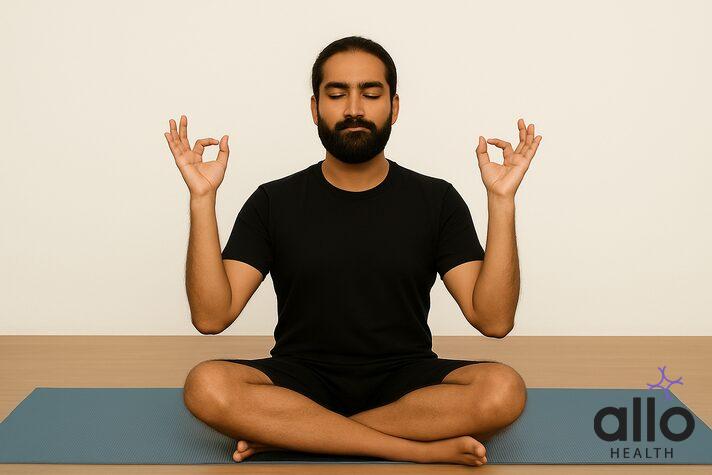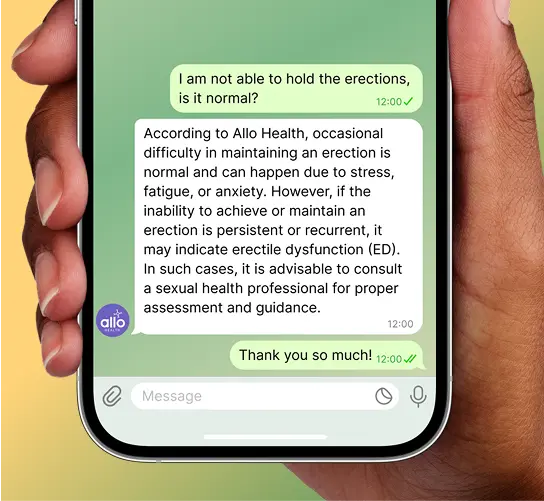Yoga for Erectile Dysfunction: Effective Poses to Boost Sexual Health
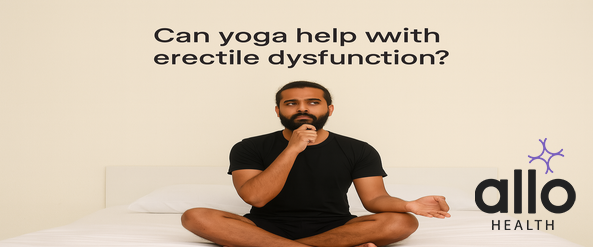
Yoga can be a supportive tool for managing erectile dysfunction (ED) by improving blood flow to the pelvic region, strengthening pelvic muscles, balancing hormones, and reducing stress, all of which are known contributors to ED. Poses like Vajrasana, Sarvangasana, Paschimottanasana, Ardha Matsyendrasana, and Garudasana help increase circulation, stimulate reproductive organs, and relax the nervous system. Practicing yoga regularly, along with breathing exercises like pranayama and mindfulness techniques, has been shown to ease performance anxiety and promote overall sexual well-being. Many men report feeling more confident and less dependent on medication after incorporating yoga into their routines. However, it’s important to consult a healthcare professional before starting, especially for those with underlying health conditions, and remember that yoga works best when combined with a healthy lifestyle and consistency over time.
If you’re curious about whether yoga for erectile dysfunction really works, you’re not alone. Many men around the world are looking for natural solutions like yoga techniques to manage this common condition. But let us be clear, yoga is not a cure for ED. Yoga may provide benefits like improving blood flow, stress reduction and strengthening pelvis muscles. All of this may promote overall sexual wellness and complement medical treatment.
Through this article you will get to know how yoga supports your sex life and why consulting a healthcare professional is necessary.
The Link Between Yoga And Erectile Dysfunction
Erectile dysfunction is one of the most common sex problems affecting millions of men. It is characterised by difficulty in achieving or keeping an erection that is good enough for sexual intercourse. [1] ED can be caused by a lot of reasons which may involve physical, anatomical and psychological factors. It is also a symptom of some issues like stress, poor blood flow, pelvic floor weakness and sedentary lifestyle. Yoga helps in coping up with these issues that can help in promoting your overall sexual wellness.
- Reduces stress and anxiety: Your body generates a hormone called cortisol which emerges under stress conditions. Too much cortisol can mess with your sexual performance [2]. Practicing yoga can help you to effectively reduce cortisol levels and enhance a good sexual life. A study highlighted that practicing yoga helps lower cortisol levels and promotes relaxation, thereby improving mental well-being and sexual function [3]. These findings confirm how managing stress through yoga can be a valuable part of addressing erectile dysfunction.
Based on our clinical data at Allo Health, out of men under 35 who took help for ED, 62% had stress as the primary cause. Among these, over 70% saw improvement in their symptoms after combining yoga, therapy, and basic lifestyle changes. - Improves blood flow and heart health: ED can result from poor blood flow and cardiovascular diseases [4]. Healthy blood flow is required for proper erections. A study from Johns Hopkins [5] mentions that underlying blood vessel problems are the most common cause of ED. Yoga promotes better vascular system and blood flow to the reproductive organs needed for proper erections [4]
- Better hormonal balance: An increase in cortisol level leads to a natural decrease in testosterone level [6]. Practicing yoga helps people to effectively reduce cortisol levels and promote hormonal equilibrium which supports testosterone development.[6]
- Healthy lifestyle: Yoga promotes a healthy lifestyle like better sleep [6], mindful eating and good digestion. All of these activities have a positive impact on sexual wellness. People on various platforms across the internet have shared how yoga practice made them aware about their lifestyle habits and all of which have helped them to perform better in the bedroom.
- Strengthen pelvic floor: Pelvic floor muscles are responsible for managing the blood flow to the pelvic area during sex. [7] Weakness in these muscles may cause erectile dysfunction [7]. A randomised trial study on some men revealed that various yoga poses and pelvic exercises have been linked to manage erectile dysfunction [8].
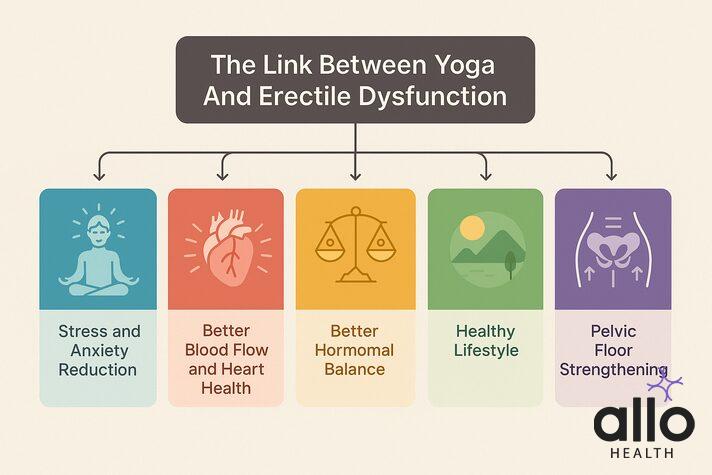
7 Best Yoga For Erectile Dysfunction
If you’re looking for natural remedies like yoga for premature ejaculation and erectile dysfunction, incorporating certain yoga poses into your routine may provide significant benefits. These poses focus on improving blood flow and pelvic strength, which are key to better erections.
- Ardha Matsyendrasana (Half Spinal Twist): This yoga pose helps to improve digestion and increases blood flow around your stomach area and private parts including the penis. Good blood flow around the penis means better erections.
How to do this:
- Sit with your legs stretched forward.
- Bend your right leg and place the foot outside your left thigh.
- Twist your body to the right and place your left elbow on the outside of your right knee.
- Breathe deeply and hold the position for a few seconds.
- Come back to the center and repeat on the other side.
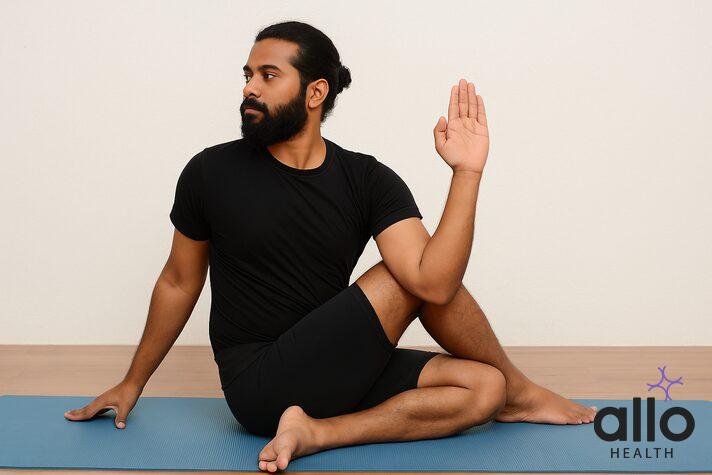
- Siddasana (Perfect Pose): This is an easy sitting pose that you can hold for a long time while focusing on deep breathing. It’s hlps in relaxing the body and pelvic area.
Steps to do siddasana yoga pose:
- Sit on the floor with your legs straight.
- Fold your left leg and place the foot near your right thigh.
- Now fold the right leg and place it over the left leg, so your right heel touches your pelvic bone.
- Sit upright and breathe slowly.
- Switch legs and repeat.
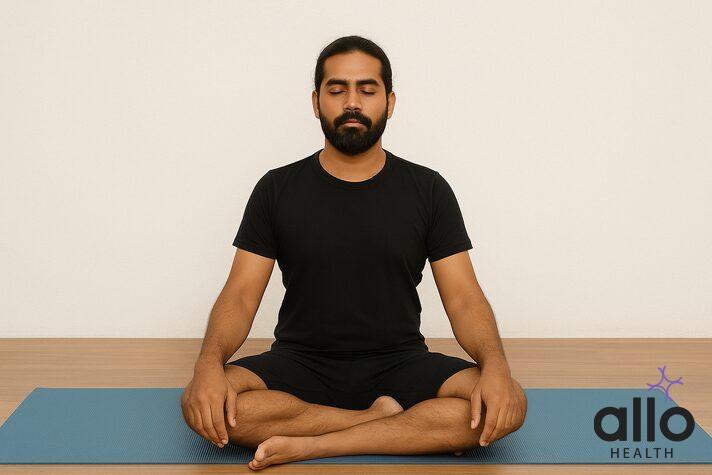
- Garudasana (Eagle Pose): This is a standing yoga pose that helps to improve blood flow in the pelvic area.
Steps to do gurudasana pose:
- Stand tall with your feet together.
- Lift your left leg and wrap it around your right leg.
- If you can, place the top of your left foot behind your right calf.
- You can also cross your arms like an eagle for a deeper stretch.
- Hold for a few breaths, then switch sides.
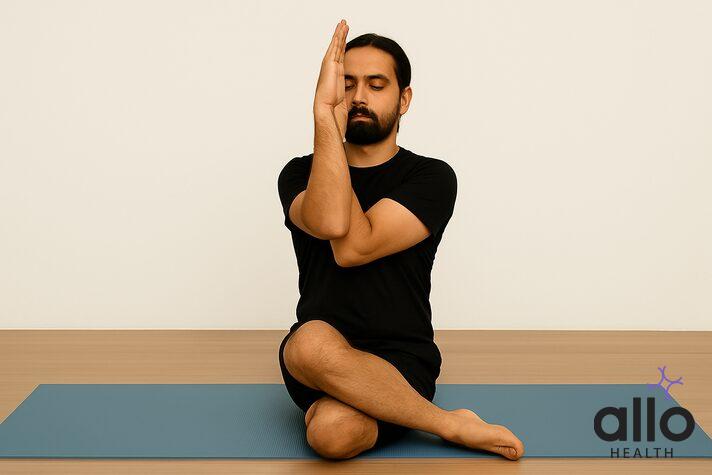
- Pavanamuktasana (Wind-Relieving Pose): This pose helps to release gas and improves blood flow in the lower belly and pelvic area.
Steps to do pavanamuktasana yoga pose:
- Lie flat on your back.
- Bring one knee toward your chest and hug it with both arms.
- Breathe in and out slowly while holding the pose.
- Release and do the same with the other leg.
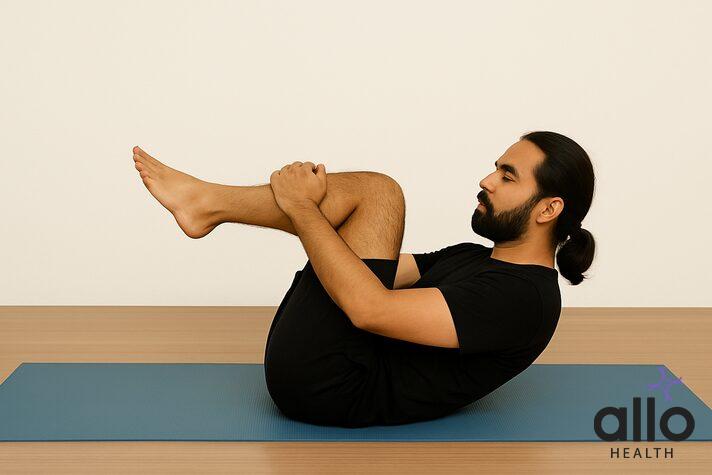
- Shavasana (Corpse Pose): This is a relaxing pose often done at the end of yoga. It helps you calm down, clear your mind, and focus on your breathing.
How to do it:
- Lie flat on your back with your legs apart and arms by your sides.
- Keep your palms facing up.
- Close your eyes and relax every part of your body, starting from your toes to your head.
- Stay in this pose for 5 to 20 minutes, breathing slowly.
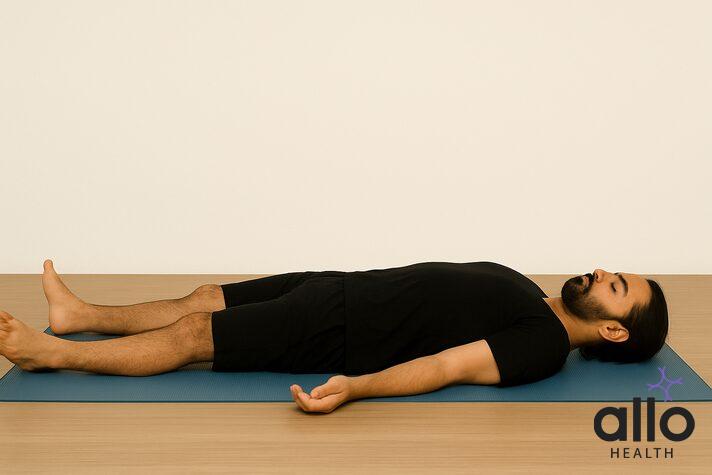
Other Basic Yoga For Erectile Dysfunction
Beside these efficient poses, there are some more easy to go breath work exercises and yoga poses that have benefits for sexual health. These poses are:
- Tantra Yoga: this yoga particularly focuses on breath, body awareness, and sometimes includes partner work.
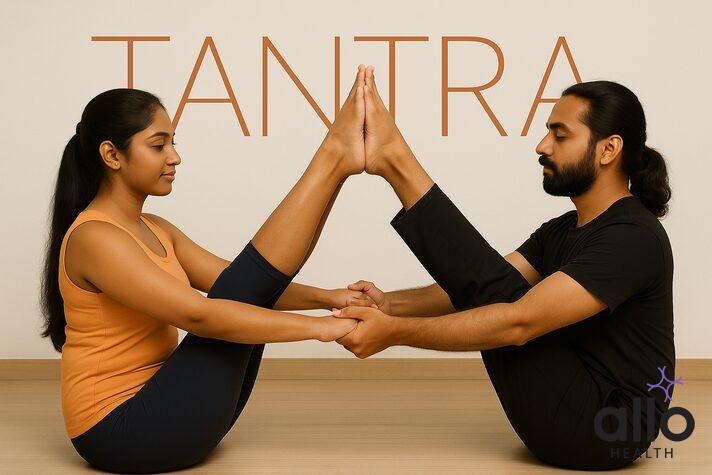
- Kundalini Yoga: this type of yoga involves chanting and breathing exercises to awaken sexual energy.

How yoga helped people with ED
Many users have mentioned that following yoga can be a safe and effective way for them to not only cure erectile dysfunction but also premature ejaculation.
At Allo Health, we found that 62 out of every 100 men under the age of 35 with ED had stress as the main cause. When they combined yoga, therapy, and some lifestyle changes, about 70% of them saw improvements in their erections.
Potential Risks And Precautions Associated with Yoga For ED
The practice of yoga may indirectly help in managing erectile dysfunction, but needs careful mindfulness. Therefore before beginning any yoga practice, especially with the intention of addressing erectile dysfunction, it is important to consult a healthcare professional. The practice of yoga includes physical risks which when techniques are not followed properly . Always keep the following safety guidelines in consideration while practicing yoga:
- Intense yoga sessions without proper guidance may lead to injuries. Therefore always seek guidance from healthcare professionals before making any significant changes to your routine.
- Those who have herniated discs as well as individuals with high blood pressure or anyone recovering from surgery must carefully select yoga poses according to their health status. Always disclose any type of physical health issues to your instructor.
- The way yoga supports erectile dysfunction may take time.The desire for fast outcomes can result in both performance frustration and excessive practice. So one must be patient.
Conclusion
While yoga offers a natural approach for men to manage erectile dysfunction, it is not a standalone solution. Yoga always works best when paired with medical interventions and a healthy lifestyle. It’s always important to speak with a healthcare professional before switching to any yoga pose, especially if you have moderate to severe ED.
Yoga may not be a direct cure for erectile dysfunction, but it helps tackle some of the major contributors like stress, poor circulation, and weak pelvic muscles. With regular practice, many men notice improvements not just in sexual performance, but in overall well-being.
The following blog article provides general information and insights on various topics. However, it is important to note that the information presented is not intended as professional advice in any specific field or area. The content of this blog is for general educational and informational purposes only.
Book consultation
The content should not be interpreted as endorsement, recommendation, or guarantee of any product, service, or information mentioned. Readers are solely responsible for the decisions and actions they take based on the information provided in this blog. It is essential to exercise individual judgment, critical thinking, and personal responsibility when applying or implementing any information or suggestions discussed in the blog.



